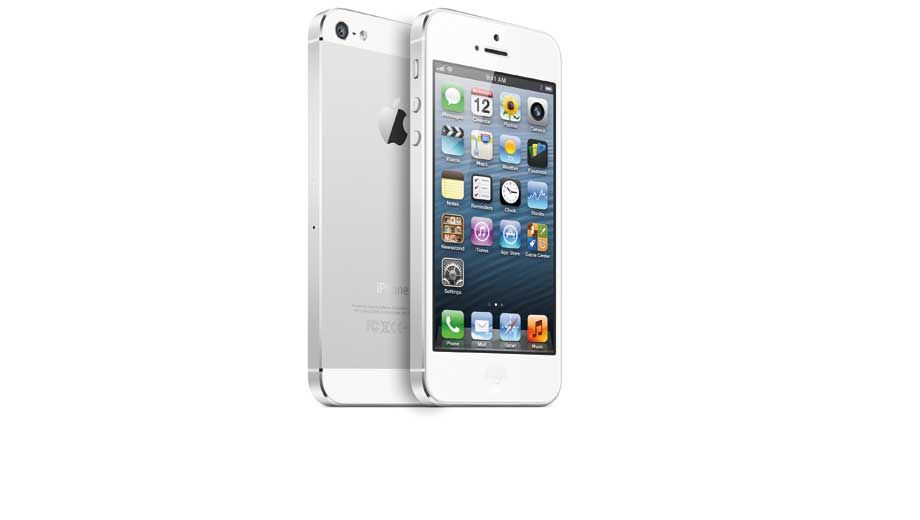Apple’s new iPhone 5 will be released in Australia on September 21st, starting at $799 outright for the 16GB version, $899 for 32GB and $999 for 64GB, as well as a range of monthly plan-based prices through Telstra, Optus and Vodafone.
Here’s the official Australian Business Traveller cheat sheet to pull it together for business travellers.
4G for Australia...
The iPhone 5 will run on the 4G ‘LTE’ networks of Telstra and Optus, along with Virgin Mobile (which uses the Optus network) - unlike the ‘new iPad’, which boasted 4G technology but not on the radio frequencies used in Australia.
That fast 4G connection will provide an average speed of 20-30Mbps, and let the iPhone 5 serve as a high-powered wifi hotspot with more bandwidth to be shared between other devices such as tablets and ultrabooks.
If you step outside the 4G network footprint, of course, speeds will scale back to 3G. Even so, the dual-channel 3G system used by Telstra can deliver a solid 10-15Mbps in many cities and larger towns.
... but not 4G for everywhere else
But there's a catch: the multiplicity of 4G networks around the world means that Apple will sell three models of the iPhone 5, each designed for a particular set of frequencies to suit the 4G networks of those countries.
The Aussie version will be the most flexible: it'll also work in the UK, Germany, Hong Kong, Singapore, Korea and on Japan's Softbank network.
But your iPhone 5 won't work on 4G in the USA or Canada, nor on Japan's KDDI network – for those you'll need one of two US versions of the iPhone 5.
Faster wifi, too
The iPhone 5’s wireless networking now supports dual-channel 802.11n on the 5GHz band for significantly faster connections, and less congestion, on wifi networks – as long as they also run on 5GHz.
Apple hasn’t advised if the iPhone 5 will also use this same warp-speed wifi when running as a 3G hotspot.
Enter the NanoSIM
The iPhone 5 also marks the debut of the tiny nanoSIM card, which is half the size of the current iPhone microSIM wafer
This will be a 'gotcha' if you rush out to buy an iPhone 5 and then fly off overseas, because it will take some time before carriers can reliably stock up on nanoSIM versions of their prepaid voice & data packages – which could leave you without a local roaming solution.
iOS 6
The new iPhone 5 comes with the new iOS 6 operating system, which packs several of its own welcome features for frequent flyers – including a new Passbook app for mobile boarding passes (which Virgin Australia will support, as shown below), more iCloud synchronisation for reminders and notes plus the ability to tweak and tame notifications and email alerts.
Read more: Apple iOS 6 – top six features for business travellers
A bigger screen
As expected, the iPhone 5 stands taller than all previous models - a noticeable 8.6cm – which stretches the screen to 4 inches measured in the diagonal, compared to the 3.5 inches of its predecessors.
The extra on-screen real estate allows for one more row of icons on the home screen, which is honestly no deal-breaker.
But when held in landscape mode it will show a full five-day workweek on the Calendar, along with more display space when browsing the web, using maps and watching videos, with the new display fitting into a 16:9 aspect ratio.
All current iPhone apps will run with a small black border around them, like a ‘letterboxed’ movie. Developers are expected to quickly push out free updates to your favourite apps which will occupy the entire screen.
Despite the larger screen, the revised glass-and-aluminium design is claimed to be 18% thinner (at 6.7mm) and 20% lighter (at 112 grams) than the iPhone 4S, which nobody ever claimed was a porker to begin with.
Clearer calls
Sure, clearer phone calls are important to everybody – but business users certainly don't want things to get crackly when it's crunch time.
The iPhone 5 has three microphones – one each on the bottom, front and back – for improved voice pickup and noise cancellation, a more efficient speaker design and supports high-definition voice calling or 'wideband audio', which is already running on the Telstra network.
New connector
Although the iPhone 5 is taller the connector socket gets smaller, going down from the skinny but wide 30-pin plug used in all iPhones, iPads and most iPods to date.
The new plug, called Lightning, means you’ll need to spring for special adaptors to continue using most iDevice accessories such as docks, cradles and even those spare USB sync-and-charge cables.
Apple will sell a Lightning adaptor for $35.
However, several dock-style accessories may prove physically incompatible with an iPhone 5 once the adaptor is fitted to the bottom of the phone.
There’s plenty more in the new iPhone 5, of course – including a better camera with panorama-mode photos and a faster A6 processor – but we’ve just stuck to the key call-outs for business travellers.
For the latest news for business travellers and frequent flyers, follow Australian Business Traveller on Twitter: we're @AusBT.









Qantas
10 Sep 2011
Total posts 162
Underwhelming is all I've got to say. Save your cash for WP8.
Qantas
10 Sep 2011
Total posts 162
Interesting article from Adam Turner. https://mobile.bit.com.au/Article.aspx?CIID=315389&type=News
Suggests that Apple have dropped the 8 ball without NFC, as they want to own the payments and checkin market too, but haven't worked out how to control it yet. Android and WP8 with NFC could see Apple's hegemony broken with open NFC support, especially on WP8.
04 Nov 2010
Total posts 670
As the owner of an iPhone 4 I won't be upgrading to the 5. Nothing in here excites me much. Happy to stick with my 4, save my money and have a closer lkook at Windows Phone 8 when that comes out, now that looks innovative!
01 Oct 2013
Total posts 1
I called the Sydney Apple store just now (1 Oct 2013) and although they didn't have any 64 GIG black iPhone 5S in stock at the moment, they confirmed that if they did sell me one, it would be model A1533.
I thought that was the model sold in the US. According to Apple's website, the one sold in Australia should be model A1530 (number on the back panel).
The Apple rep also said that iPhone 5S's bought in Australia don't work on jsut two networks in the US: Verizon and Sprint.
A call to an Apple store in the US confirmed that as long as the phone is unlocked, it can be used in the US, but they didn't know if it would be on the LTE, 4G, or 3G network.
Does anyone have practical, first-hand experience with an Australian purchased phone (what A model number?) working on the AT&T LTE network in the US?
Thanks
Hi Guest, join in the discussion on Apple